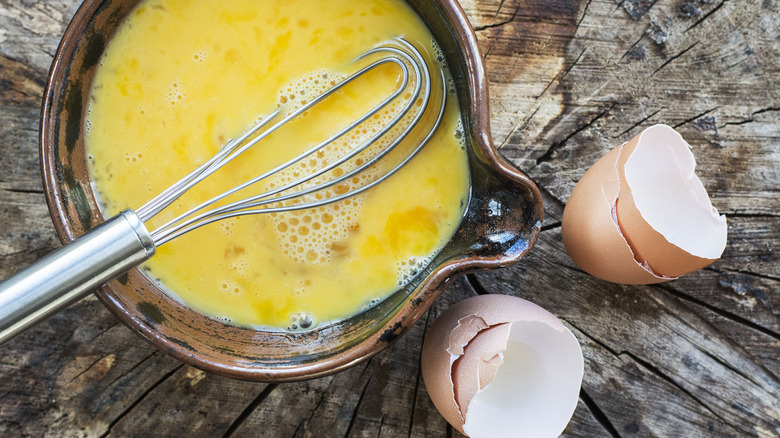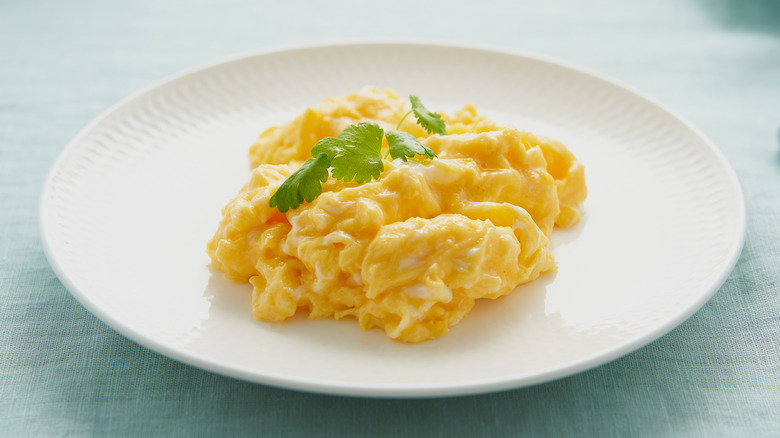The Overlooked Whisking Mistake That's Ruining Your Scrambled Eggs
When it comes to making scrambled eggs, a whisk and a bowl are the first tools you grab. And when you're in the middle of whipping some up, you really do want to whip them with the whisk in order to make your scrambled eggs taste better. Whisking is essentially inflating air into whatever ingredient you're stirring. For example, when whisking heavy cream, the liquid goes from pourable to stiff-peaked and spoonable. Whisking does something similar with egg whites, though it doesn't lead to quite the same texture with whole eggs. Instead, it inflates just enough air to make your eggs frothy, so when they hit the pan, they turn out fluffy and pillow-like.
While a whisk is a proper kitchen utensil to get your eggs perfectly combined for the ideal scramble, the process has some implications. Believe it or not, when you whisk is just as important as how robustly you do it. That's right, the timing matters.
Don't whisk ahead of time
Whisking allows your egg whites and yolks to emulsify into one liquid. However, whisking your eggs and then putting down the bowl can deter your scrambled eggs from having that light and fluffy texture you're going for. It's as subtle as that; by placing the bowl on the counter, you erase all the brisk whisking you just did and deflate the eggs. The sudden movement will cause all the air bubbles that you worked so hard for to pop and leave your egg mixture flat.
Instead, try whisking your eggs immediately before pouring them into the pan so they stay perfectly inflated upon hitting the heat. While this can be a difficult task when whipping up a breakfast feast, as whisking 'em ahead of time helps with preparation, you can simply crack the eggs in the bowl and throw in the whisk just to get your station ready. This simple change in habit can amp up your next batch of scrambled eggs, taking them from fine to fantastic.

